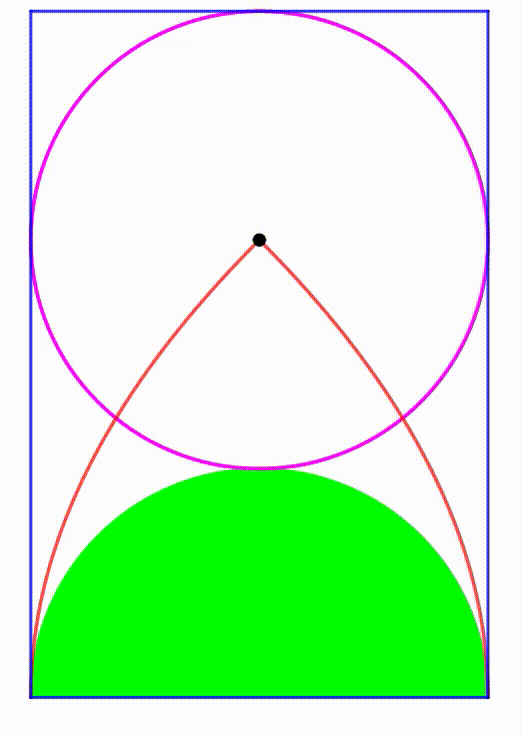Dynamic Geometry: P27

A rectangle, with side lengths and , has its base as the diameter of a semicircle with radius . The red curves are the locus of the centers of all circles inscribed by the rectangle and semicircle that are tangent to the semicircle and at least one vertical side of the rectangle.
If the area bounded by the red curves and the semicircle can be expressed as:
where , , and are positive integers, find the smallest value of .
The answer is 5.
This section requires Javascript.
You are seeing this because something didn't load right. We suggest you, (a) try
refreshing the page, (b) enabling javascript if it is disabled on your browser and,
finally, (c)
loading the
non-javascript version of this page
. We're sorry about the hassle.
Let the center of the semicircle be the origin O ( 0 , 0 ) of the x y -plane with the base of the rectangle be the x -axis. Since the figure is symmetrical about the y -axis, let us just consider only the positive quadrant. Let any point on the locus or the center of any circle satisfying the conditions be P ( x , y ) , when the radius of the circle is r . Then we note that:
{ x = 1 − r y = ( 1 + r ) 2 − x 2 = ( 2 − x ) 2 − x 2 ⟹ r = 1 − x ⟹ y 2 = 4 − 4 x
We note that the red curve y 2 = 4 − 4 x is a parabola. The area bounded by the parabola and two axes is 3 2 the area of the smallest rectangle with the two axes as sides that inscribes the parabola. In this case the rectangle has vertices at ( 0 , 0 ) , ( 0 , 2 ) , ( 1 , 2 ) , and ( 1 , 0 ) , whose area is 2 × 1 = 2 . Therefore the area bounded by the two red curves and the x -axis is 2 × 2 × 3 2 = 3 8 and the area bound by the two red curves and the semicircle is 3 8 − 2 π = 6 1 6 − 3 π . The answer to a + b + c = 5 .